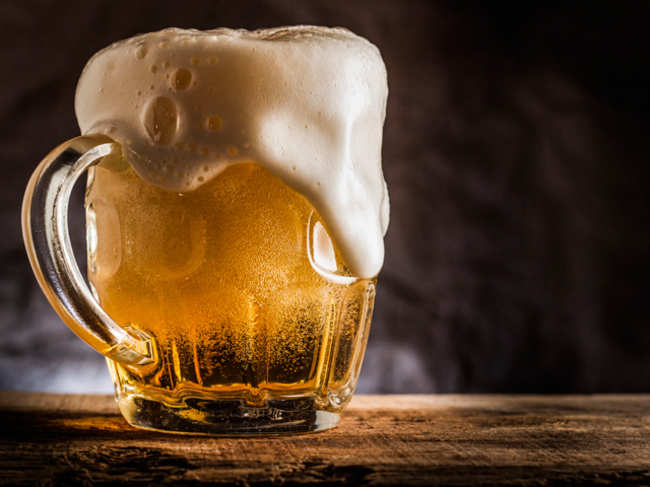 ThinkStock Photos
ThinkStock PhotosLONDON: Scientists have created a machine learning algorithm that may help brewers to have greater control over the flavour of beer, and also yield personalised treatments for metabolic disorders in future.
The algorithm developed by scientists at the Francis Crick Institute in the UK can predict yeast metabolism from its protein content.
Metabolism is the process by which organisms convert nutrients into energy and essential molecules, via a series of chemical reactions.
When yeast metabolises sugar in the absence of oxygen, it 'ferments' to produce alcohol, acids and gases, including flavour compounds, that make bread, wine and beer taste good.
Within a cell, metabolism produces hundreds of small molecules, called metabolites.
Although yeast is evolutionarily very distant to humans, many of these metabolites are identical, and are made in a similar way.
Until now, however, the mechanisms controlling metabolism have not been fully understood.
The study, published in the journal Cell Systems, shows that to a large extent, the metabolism of brewer's yeast (S cerevisiae) is predictable by machine learning algorithms, if they are provided with large amounts of protein expression information.
"Thanks to machine learning, we now have a better understanding of what controls metabolism, which is good news for brewers looking to create the perfect pint, or for biotechnologists that use yeast to produce vaccines and other proteins that are medically important," said Aleksej Zelezniak, a researcher at Francis Crick Institute.
"Until now, scientists have been divided over whether metabolism is self-regulating or controlled by gene expression changes; partly because existing methods have failed to detect any strong correlation between the read-out of genes -- proteins -- and metabolites," Zelezniak said.
Scientists quantified enzyme expression in 97 different strains of S cerevisiae, known to show differences in metabolism, linking it to changes in metabolite concentrations measured.
They developed machine learning algorithms that could pick up complex relationships between changes in gene expression and metabolites produced.
They found that metabolism was controlled by lots of enzymes acting in concert -- with no single enzyme having a major effect by itself.
The team is hoping to transfer their findings in yeast cells to the clinic in the next few years to help patients with metabolic diseases.
The algorithm developed by scientists at the Francis Crick Institute in the UK can predict yeast metabolism from its protein content.
Metabolism is the process by which organisms convert nutrients into energy and essential molecules, via a series of chemical reactions.
When yeast metabolises sugar in the absence of oxygen, it 'ferments' to produce alcohol, acids and gases, including flavour compounds, that make bread, wine and beer taste good.
Within a cell, metabolism produces hundreds of small molecules, called metabolites.
Although yeast is evolutionarily very distant to humans, many of these metabolites are identical, and are made in a similar way.
Until now, however, the mechanisms controlling metabolism have not been fully understood.
The study, published in the journal Cell Systems, shows that to a large extent, the metabolism of brewer's yeast (S cerevisiae) is predictable by machine learning algorithms, if they are provided with large amounts of protein expression information.
"Thanks to machine learning, we now have a better understanding of what controls metabolism, which is good news for brewers looking to create the perfect pint, or for biotechnologists that use yeast to produce vaccines and other proteins that are medically important," said Aleksej Zelezniak, a researcher at Francis Crick Institute.
"Until now, scientists have been divided over whether metabolism is self-regulating or controlled by gene expression changes; partly because existing methods have failed to detect any strong correlation between the read-out of genes -- proteins -- and metabolites," Zelezniak said.
Scientists quantified enzyme expression in 97 different strains of S cerevisiae, known to show differences in metabolism, linking it to changes in metabolite concentrations measured.
They developed machine learning algorithms that could pick up complex relationships between changes in gene expression and metabolites produced.
They found that metabolism was controlled by lots of enzymes acting in concert -- with no single enzyme having a major effect by itself.
The team is hoping to transfer their findings in yeast cells to the clinic in the next few years to help patients with metabolic diseases.
Read More News on
Download The Economic Times News App to get Daily Market Updates & Live Business News.
...moreRead More News on
Download The Economic Times News App to get Daily Market Updates & Live Business News.
...more





